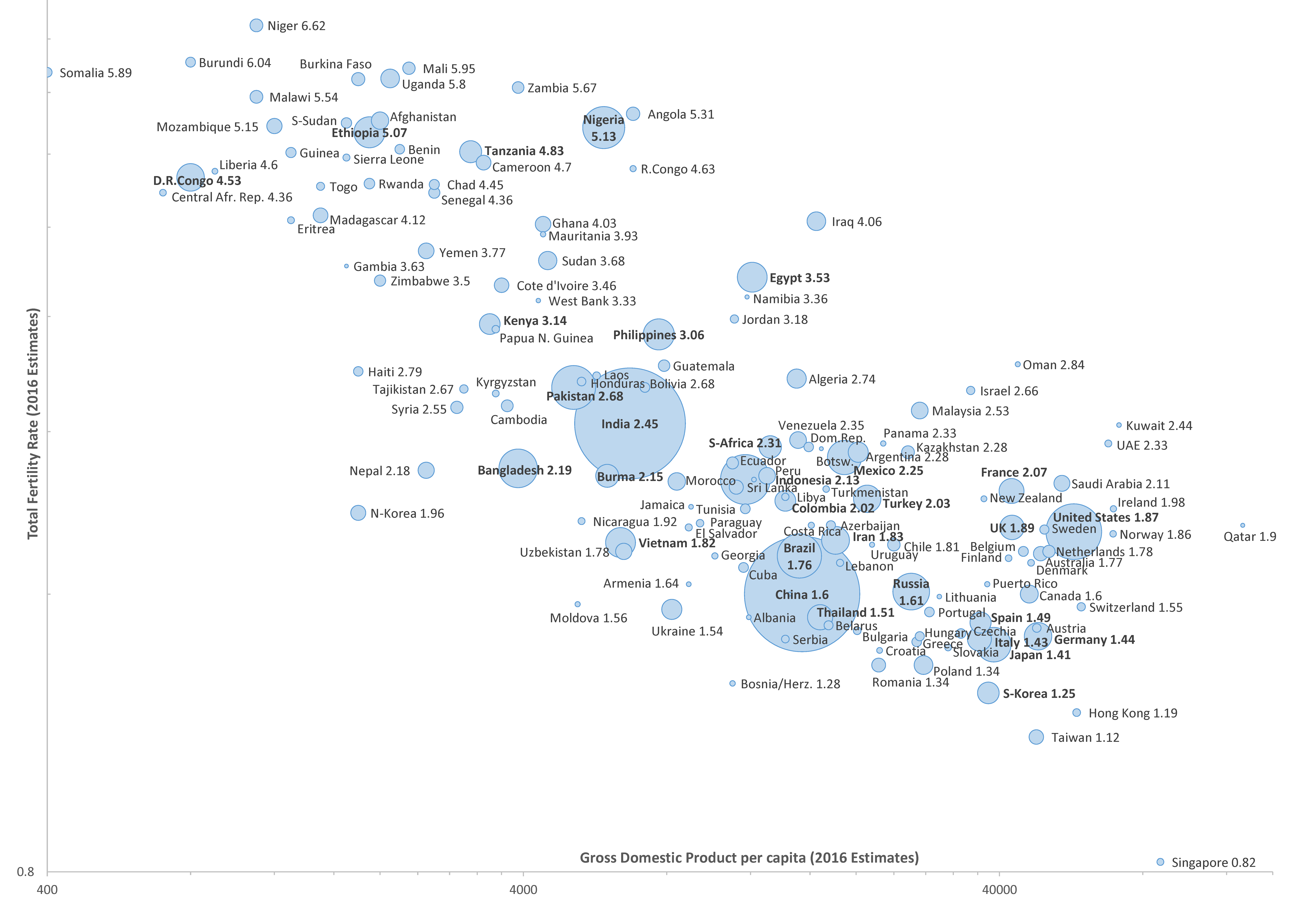
Spotted this article that reports that U.S. fertility is the lowest it has been in 32 years: https://www.cnn.com/2019/05/15/health/us-birth-rate-record-low-cdc-study/index.html
The article reports a rate of 1,728 children per 1,000 women, or 1.728 per woman. This is 3.79 million births in 2018. For obviously reasons, replacement rate needs to be more than 2 kids per woman, usually assumed to be 2.1 (which is the figure used in the article, but I don’t know what the actual replacement rate figure is).
So, this is a shortfall of 0.372 children per woman. Now, how significant is such a shortfall? Well, we need a rate of 2.1 and we are getting 1.728 so 2.1/1.728 = 1.215 times the 3.79 million births = 4.61 million births needed. So 4.61 – 3.79 = 820,000 new people needed each year (there is probably a more sophisticated and more correct calculation out there).
The alternative is this scenario:
Therefore, it looks like we have to accept at least 820,000 immigrants a year to maintain status quo. There are a lot of economic reasons why this is probably needed and I don’t know a whole lot of people who dispute this. This of course, assumes the birth rate remains constant and right now it is declining, Currently, the U.S. accepts 1.2 million legal immigrants a year (2016). It appears that the United States receives around 300,000 “permanent” illegal immigrants a year (see this blog post):
With 1.3 to 1.5 million immigrants coming in each year, this means we do have a 500K – 700K surplus, which will cause the U.S. population to grow. There is also a certain number of people that migrate from the U.S. The U.S. population growth rate is currently around 0.8% a year.
On the other hand, I am sure some businesses and economists would argue that the United States needs a positive immigration flow to maintain and expand the labor force and to expand the economy. I am not sure of the specifics of this, but there certainly has been work published on this.
I am very much out of my lane here, in that I have not invested any significant time in examining these issues. I am sure there are more rigorous calculations efforts out there. But still, it does indicate that the U.S. does need to maintain over 800,000 migrants a year to sustain its population, and probably several hundreds of thousands above that to maintain its labor force and economic growth.

It’s not just a question of numbers, it’s also a question of how productive these people are. A lot Central and South American immigrants are net tax consumers (take out more in government services than pay in taxes etc.). Also there is the growing political fragmentation you can see from espionage by Chinese immigrants across the US universities and companies to differential voting patterns amongst ethnic groups and block group voting in elections. Also shifts in births in the USA now only about 51% of those born are white + non-white immigrants and you can see it won’t be too long before demographics moves the USA in a much more socialist/democrat party direction to name but 1 consequence.
This seems to be a leftover of the Obama administration, but Western Europe is facing similar issues.